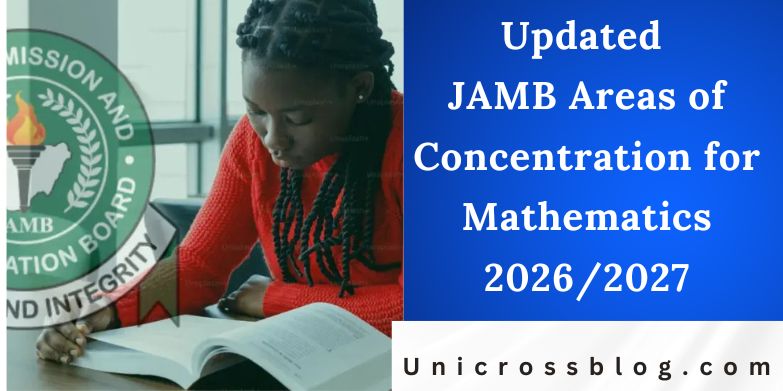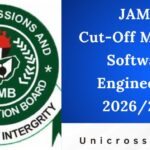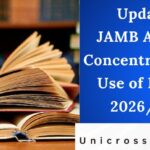Preparing for the Joint Admissions and Matriculation Board (JAMB) Unified Tertiary Matriculation Examination (UTME) is a pivotal step for Nigerian students aspiring to gain admission into higher institutions. For the 2026/2027 academic session, Mathematics remains a cornerstone subject, particularly for candidates pursuing science-related courses such as Engineering, Medicine, Computer Science, Architecture, and the pure sciences. As one of the compulsory subjects for most science combinations, excelling in Mathematics can significantly boost your overall UTME score and open doors to competitive programs.
The JAMB Areas of Concentration for Mathematics are derived directly from the official syllabus, which serves as a roadmap for what to expect in the exam. This updated guide focuses on the key topics that are likely to feature prominently, based on patterns from previous years and the board’s emphasis on foundational and applicative skills. The syllabus aims to test candidates’ ability to acquire computational and manipulative skills, develop precise, logical, and formal reasoning, apply mathematical concepts to everyday problems, and appreciate the relevance of Mathematics in various fields.
In this expanded resource, we’ll delve into the main areas of concentration, providing detailed explanations, examples, and study tips to help you build confidence. Whether you’re a first-time candidate or retaking the exam, understanding these areas will allow you to prioritize your study time effectively, avoiding unnecessary overload. Remember, the UTME Mathematics paper consists of 60 multiple-choice questions to be answered in 60 minutes, covering a broad spectrum from basic arithmetic to advanced calculus concepts. Consistent practice with past questions and timed simulations is essential for success.

JAMB Areas of Concentration for Mathematics
1. Number Bases and Number Systems
One of the foundational areas in the JAMB Mathematics syllabus is Number Bases and Number Systems. This section tests your understanding of how numbers are represented in different bases, such as binary (base 2), decimal (base 10), and hexadecimal (base 16), which are crucial for computer science and logical reasoning.
Key subtopics include conversion between bases, operations (addition, subtraction, multiplication) in non-decimal bases, and fractions in different bases. For instance, converting 1011 from binary to decimal yields 11, as it equals 1×23+0×22+1×21+1×20=8+0+2+1=111 \times 2^3 + 0 \times 2^2 + 1 \times 2^1 + 1 \times 2^0 = 8 + 0 + 2 + 1 = 11.
To master this, practice converting numbers systematically and solving word problems involving base conversions, like calculating the total cost in a binary-coded shopping scenario. Expect 3-5 questions here, emphasizing quick mental calculations.
2. Fractions, Decimals, Approximations, and Percentages
Building on basic numeracy, this area covers Fractions, Decimals, Approximations, and Percentages—topics that appear in nearly every UTME paper due to their real-world applications in finance, measurements, and data interpretation.
Focus on simplifying fractions, converting between fractions and decimals, approximation techniques (e.g., rounding to significant figures), and percentage calculations (increases, decreases, profit/loss). A common question might involve finding 15% of 240, which is 0.15×240=360.15 \times 240 = 36, or approximating 50\sqrt{50} to two decimal places (about 7.07).
Study tip: Use real-life examples, like calculating discounts during sales, to make it relatable. This section often integrates with ratios and proportions, so practice combined problems. Aim for accuracy, as these form the bedrock for more complex algebra.
3. Indices, Logarithms, and Surds
Indices (exponents), Logarithms, and Surds challenge your ability to handle exponential growth and irrational numbers. This is a high-yield area, with questions on laws of indices (e.g., am×an=am+na^m \times a^n = a^{m+n}), solving logarithmic equations like log28=3\log_2 8 = 3, and rationalizing surds such as 12=22\frac{1}{\sqrt{2}} = \frac{\sqrt{2}}{2}.
Logarithms link to scientific notation, useful for large numbers in physics. Practice simplifying expressions like 32×3−1=31=33^2 \times 3^{-1} = 3^{1} = 3 and solving logx16=2 \log_x 16 = 2 (x=4). JAMB often tests applications, like population growth models. Dedicate time to memorizing rules and using calculators sparingly to build fluency.
4. Sets, Matrices, and Inequalities
Sets, Matrices, and Inequalities introduce logical and matrix operations, essential for advanced math and programming. Subtopics include set notation (union, intersection, Venn diagrams), matrix addition/subtraction, determinants, and solving linear inequalities like 2x+3>72x + 3 > 7 (x > 2).
For matrices, compute inverses for 2×2 matrices, e.g., for (1234)\begin{pmatrix} 1 & 2 \\ 3 & 4 \end{pmatrix}, determinant = -2, inverse involves swapping and negating. Venn diagrams often appear in probability contexts. This area tests diagrammatic representation, so draw sketches during practice.
5. Polynomials and Algebraic Fractions
Polynomials and Algebraic Fractions form the core of algebra, covering factorization, expansion, and simplification. Key skills include factoring quadratics (e.g., x2+5x+6=(x+2)(x+3)x^2 + 5x + 6 = (x+2)(x+3)), partial fractions, and solving polynomial equations.
Expect questions on remainder theorem or resolving 3x+2(x−1)(x+2)\frac{3x+2}{(x-1)(x+2)} into partial fractions. Applications include optimization problems. Tip: Factorize daily to spot patterns quickly.
6. Quadratic Equations and Simultaneous Equations
This section emphasizes solving Quadratic and Simultaneous Equations, both linear and non-linear. Use factorization, completing the square, or formula for quadratics (x=−b±b2−4ac2ax = \frac{-b \pm \sqrt{b^2 – 4ac}}{2a}); for simultaneous, substitution or elimination.
A typical problem: Solve x2−5x+6=0x^2 – 5x + 6 = 0 (roots 2,3) or x+y=5x + y = 5, x2+y=7x^2 + y = 7. Real-life ties include projectile motion. Practice graphical solutions for intuition.
7. Sequences and Series, Coordinate Geometry, and Trigonometry
Sequences and Series cover arithmetic/geometric progressions (sum formulas: S_n = n/2 (2a + (n-1)d)). Coordinate Geometry includes distance formula, midpoints, and equations of lines/circles. Trigonometry: sine/cosine rules, identities like sin²θ + cos²θ = 1, and bearings.
These integrate in problems like finding arc lengths or locus. Focus on diagrams for geometry.
8. Mensuration, Locus, and Statistics
Mensuration: volumes/areas of shapes (e.g., cylinder volume πr²h). Locus: paths satisfying conditions. Statistics: mean, median, probability (P(A∪B) = P(A) + P(B) – P(A∩B)).
High-frequency topics; use formulas sheets.
9. Calculus and Permutations, Combinations, Binomial Theorem
Calculus: differentiation (chain rule), integration basics. Permutations/Combinations: nPr, nCr; Binomial: (a+b)^n expansion.
Entry-level, but crucial for STEM.
READ ALSO: Approved JAMB CBT Centres in Abuja (FCT) 2026/2027
FAQs
How many questions come from each area in JAMB Mathematics?
Distribution varies, but algebra and arithmetic often dominate (20-25 questions), while calculus is lighter (5-8).
Are calculators allowed in JAMB 2026/2027?
No, it’s an on-screen basic calculator; practice mental math.
What if the syllabus changes slightly for 2026/2027?
Core topics remain stable; check official updates annually.
How to prepare for word problems?
Translate English to math; practice diverse scenarios.
Recommended study time for Mathematics?
2-3 hours daily, focusing on weak areas via past papers.
Can arts students take Mathematics?
Yes, but it’s mandatory for sciences; choose based on course.







